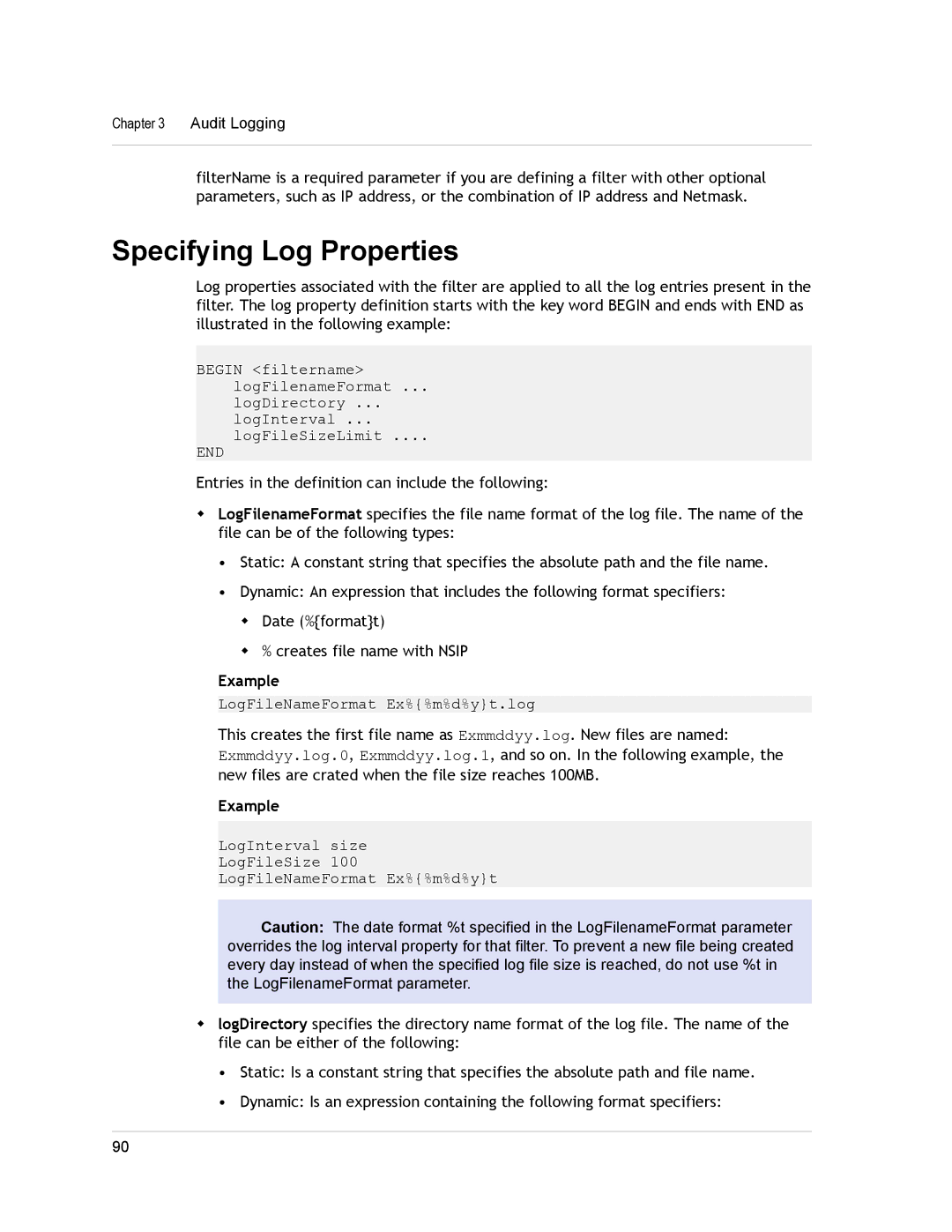
Chapter 3 Audit Logging
filterName is a required parameter if you are defining a filter with other optional parameters, such as IP address, or the combination of IP address and Netmask.
Specifying Log Properties
Log properties associated with the filter are applied to all the log entries present in the filter. The log property definition starts with the key word BEGIN and ends with END as illustrated in the following example:
BEGIN <filtername>
logFilenameFormat ...
logDirectory ...
logInterval ...
logFileSizeLimit ....
END
Entries in the definition can include the following:
wLogFilenameFormat specifies the file name format of the log file. The name of the file can be of the following types:
•Static: A constant string that specifies the absolute path and the file name.
•Dynamic: An expression that includes the following format specifiers: w Date (%{format}t)
w % creates file name with NSIP
Example
LogFileNameFormat Ex%{%m%d%y}t.log
This creates the first file name as Exmmddyy.log. New files are named: Exmmddyy.log.0, Exmmddyy.log.1, and so on. In the following example, the new files are crated when the file size reaches 100MB.
Example
LogInterval size
LogFileSize 100
LogFileNameFormat Ex%{%m%d%y}t
![]() Caution: The date format %t specified in the LogFilenameFormat parameter overrides the log interval property for that filter. To prevent a new file being created every day instead of when the specified log file size is reached, do not use %t in the LogFilenameFormat parameter.
Caution: The date format %t specified in the LogFilenameFormat parameter overrides the log interval property for that filter. To prevent a new file being created every day instead of when the specified log file size is reached, do not use %t in the LogFilenameFormat parameter.
wlogDirectory specifies the directory name format of the log file. The name of the file can be either of the following:
•Static: Is a constant string that specifies the absolute path and file name.
•Dynamic: Is an expression containing the following format specifiers:
90
